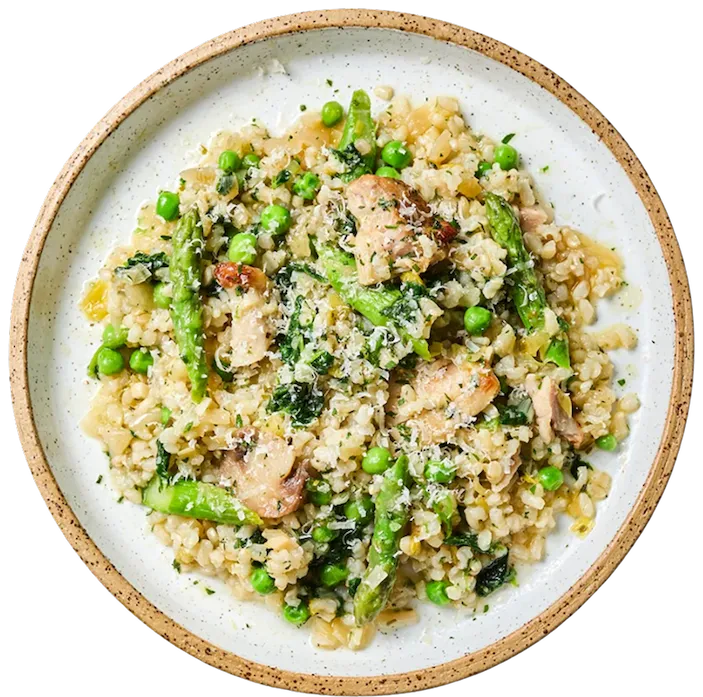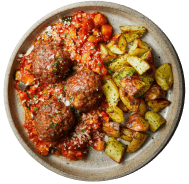What are the UK’s eating habits like?
The latest results are in on the nation’s diet and eating habits. So, how are we doing?
Have you ever heard of the National Diet and Nutrition Survey (NDNS)? It's the biggest rolling survey of the UK’s eating habits. It gives a representative snapshot of our diets and nutrient intake, helping show how well we’re meeting dietary guidelines. The findings shape government policy on food and nutrition – and, as a Dietitian, I find it helpful for finding out where to encourage focus when it comes to healthy eating.
The survey gathers data from 1,000 people - 500 adults and 500 children - each year. Participants are interviewed and then asked to record everything they’ve eaten or drunk in the past 24 hours on four different occasions. The results are then analysed and published in a report, the lastest of which was published in June, covering data from 2019–2023. So, let’s look at some of the key findings.
Fruit and veg intake have fallen
Most people still aren’t getting the recommended five portions of fruit and vegetables a day – a habit that can improve health and reduce the risk of chronic conditions. Only 17% of adults are meeting the 5-a-day target, compared with 33% in the last report.
On average, adults consumed 3.3 to 3.7 portions per day. Researchers think the drop could be down to covid-19 pandemic and the cost-of-living crisis, which has driven up prices.
Sugar and saturated fat
We’re still eating more free sugars and saturated fat than recommended. Staying within the recommended limits can help support heart health and maintain a healthy body weight.
- Free sugars (those added to food or naturally present in honey, syrup and fruit juice) should make up no more than 5% of our daily calories, but the average is 10%.
- Saturated fat should make up less than 10% of our daily calories, but adults average 12.6%.
The big fibre gap
Fibre is a type of carbohydrate that we don’t digest, but which has lots of health benefits – helping to protect against various health conditions, feeding our gut microbiome and helping maintain a healthy bodyweight.
In 2016, the recommended intake of fibre was increased to 30 grams a day, but results showed 96% of adults are not meeting this recommendation. The average daily intake is now 16.4g, leaving a gap of around 13g.
Vitamin D levels
Vitamin D helps us absorb calcium (crucial for bone health) and is linked with muscle strength. Only a few foods are rich in Vitamin D - so our main source is via the action of sunlight on the skin.
The survey found 18% of adults have low vitamin D levels, with deficiencies more common in winter. This is because between October and March, the sun’s ray’s aren’t strong enough for us to make vitamin D, so a daily supplement containing 10 micrograms of vitamin D is recommended for all adults.
The bigger picture
These figures don't make for uplifting reading, and they highlight the need for policies that change the food environment in ways which make healthy food more accessible and affordable.
But on an individual level, it shows there's lots of room for change. While it’s easy to be drawn in by the latest health fads or expensive supplements/ powders, most of us would benefit far more from focusing on:
- Eating more fruit and vegetables
- Adding more high fibre foods like beans, lentils, seeds and wholegrains
- Reducing sugar and saturated fat
- Taking a vitamin D supplement in the colder months
At Field Doctor, our goal is to help make healthy eating easier, and we're always looking for ways to make our meals as nutritious as possible. Our meals are never high in saturated fat or sugar, and most contain two servings of vegetables. If you're looking to give your fibre intake a boost, check out our highest fibre meals here, containing up to 14 grams of fibre. Our Mediterranean meals are also fortified with vitamin D.
related content
more content: General Health
browse our ranges.
choose from one of our ranges or personalise your own menu from 60+ meals.
- low FODMAP

- eat well, live well programme

- gluten free

- high protein

- weight management

- ibs

- lowest calorie

- lower carbs

- mediterranean

- smaller range

- pcos

- lean + lighter

- menopause

- heart healthy

- full menu

- gift cards